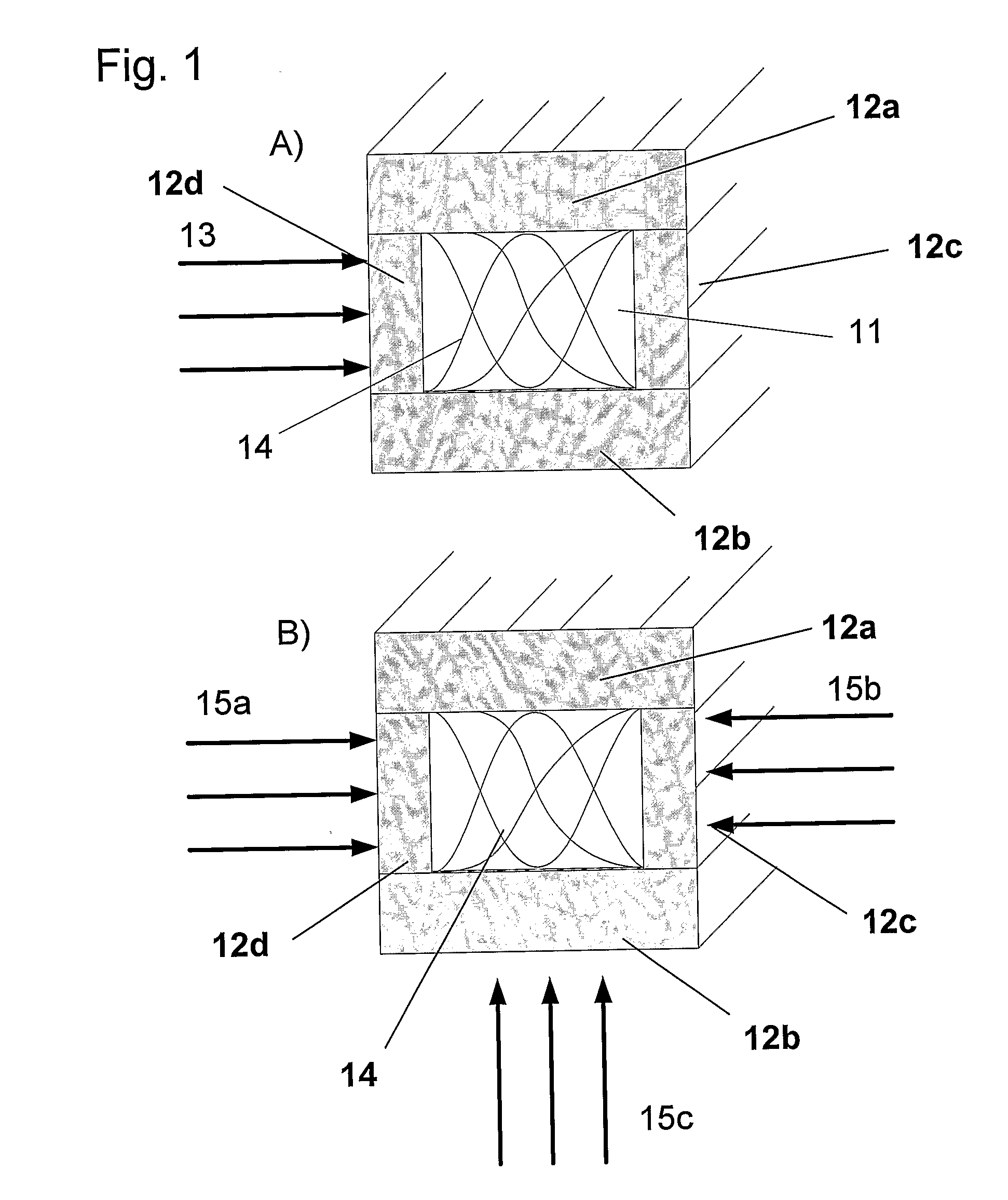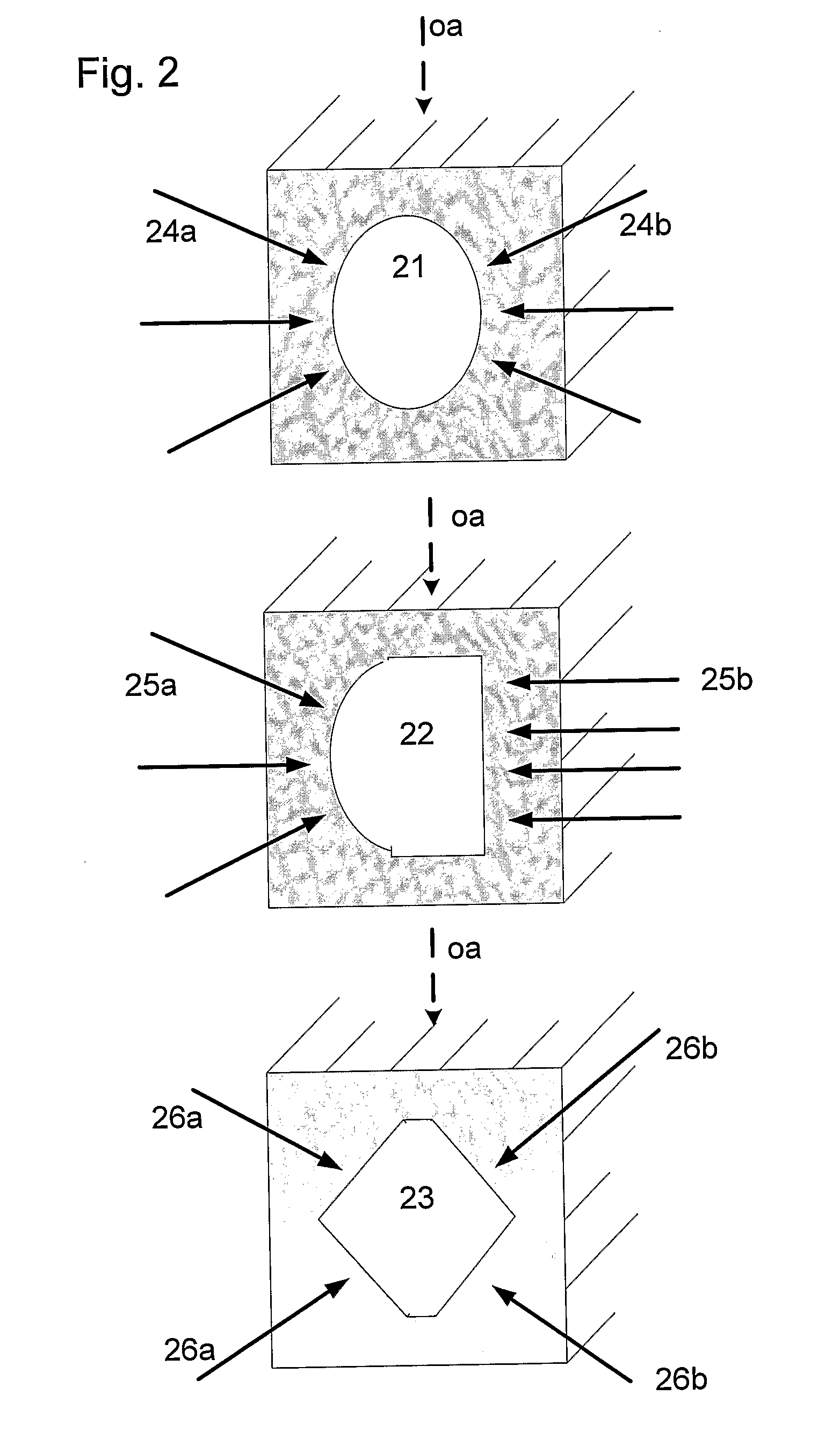Method and Device for Acoustic Manipulation of Particles, Cells and Viruses
- Summary
- Abstract
- Description
- Claims
- Application Information
AI Technical Summary
Benefits of technology
Problems solved by technology
Method used
Image
Examples
Embodiment Construction
[0045]FIG. 1 shows a schematical side view of a micro-channel 11 which is embedded in a surrounding material forming a top wall 12a, a bottom wall 12b and lateral walls 12c, 12d. An acoustic wave 13 is applied laterally to the inner volume of said micro-channel 11 as indicated in FIG. 1a. The inner surfaces of the walls 12a-12d of the micro-channel 11 are reflecting surfaces for the acoustic wave. With the distance of these inner surfaces adapted to the wavelength of the acoustic wave, a standing and / or stationary acoustic wave 14 forms in this micro-channel 11 as shown schematically in FIG. 1. The micro-channel 11 then serves as a resonating cavity for the acoustic wave to generate the standing and / or stationary wave 14. It is evident that the wavelength of the acoustic wave 13 also depends on the medium inside of this micro-channel 11, in particular of the type of fluid supplied to this micro-channel 11. As a rule, the frequency of the applied acoustic wave 13 is tuned appropriate...
PUM
 Login to View More
Login to View More Abstract
Description
Claims
Application Information
 Login to View More
Login to View More - R&D
- Intellectual Property
- Life Sciences
- Materials
- Tech Scout
- Unparalleled Data Quality
- Higher Quality Content
- 60% Fewer Hallucinations
Browse by: Latest US Patents, China's latest patents, Technical Efficacy Thesaurus, Application Domain, Technology Topic, Popular Technical Reports.
© 2025 PatSnap. All rights reserved.Legal|Privacy policy|Modern Slavery Act Transparency Statement|Sitemap|About US| Contact US: help@patsnap.com



